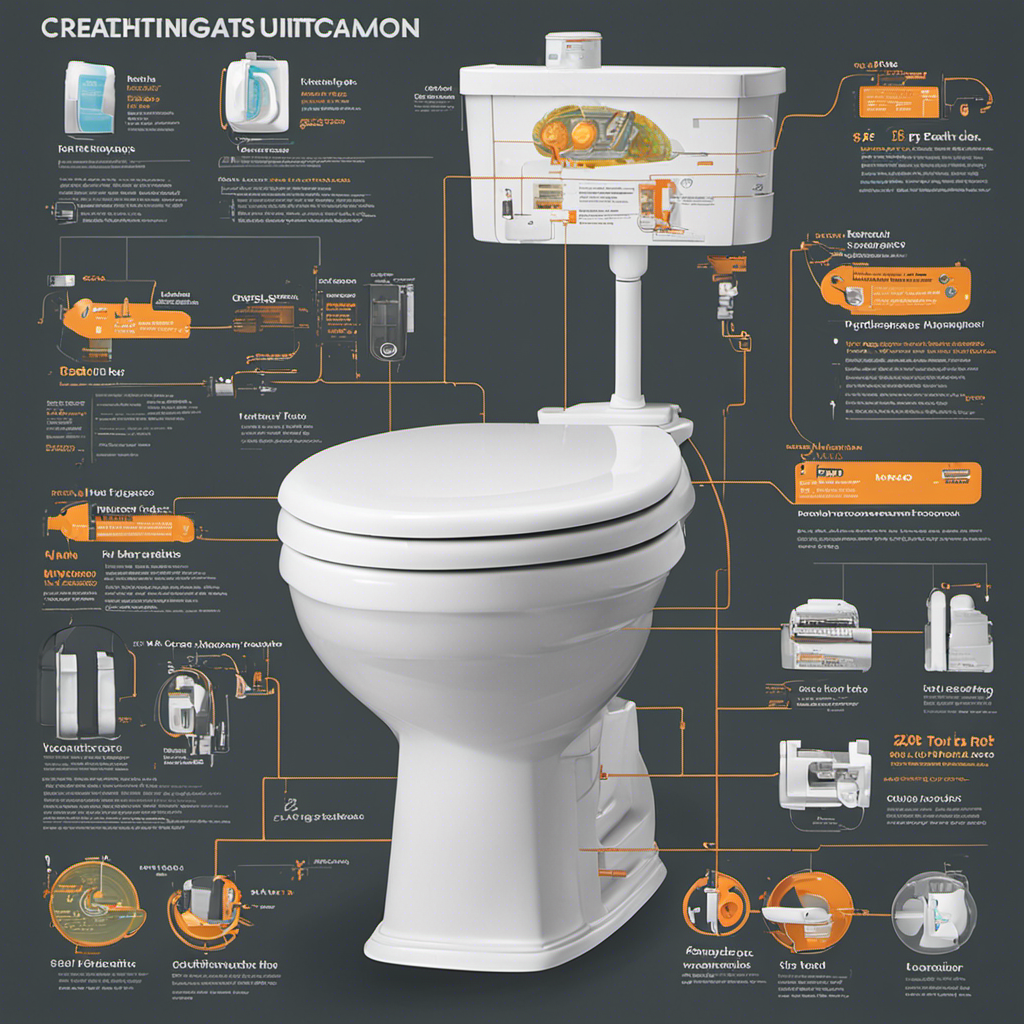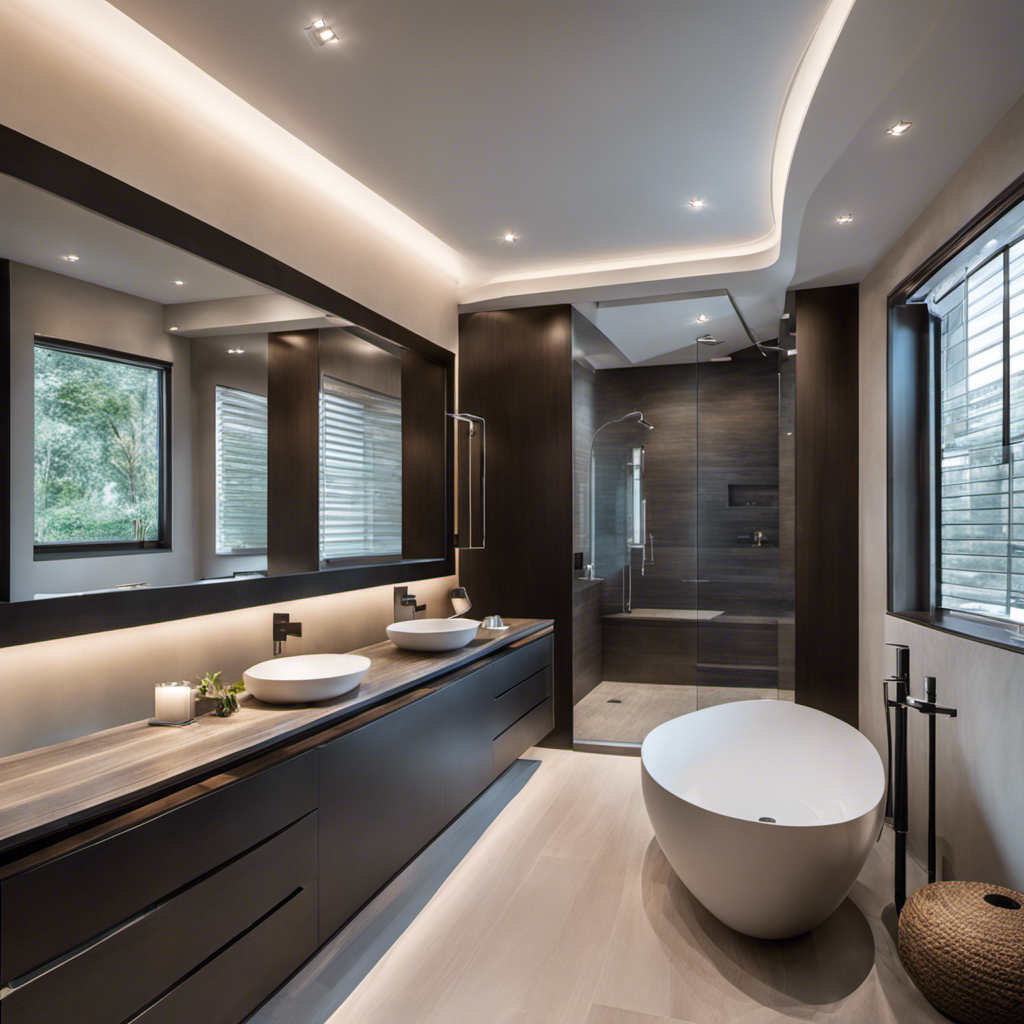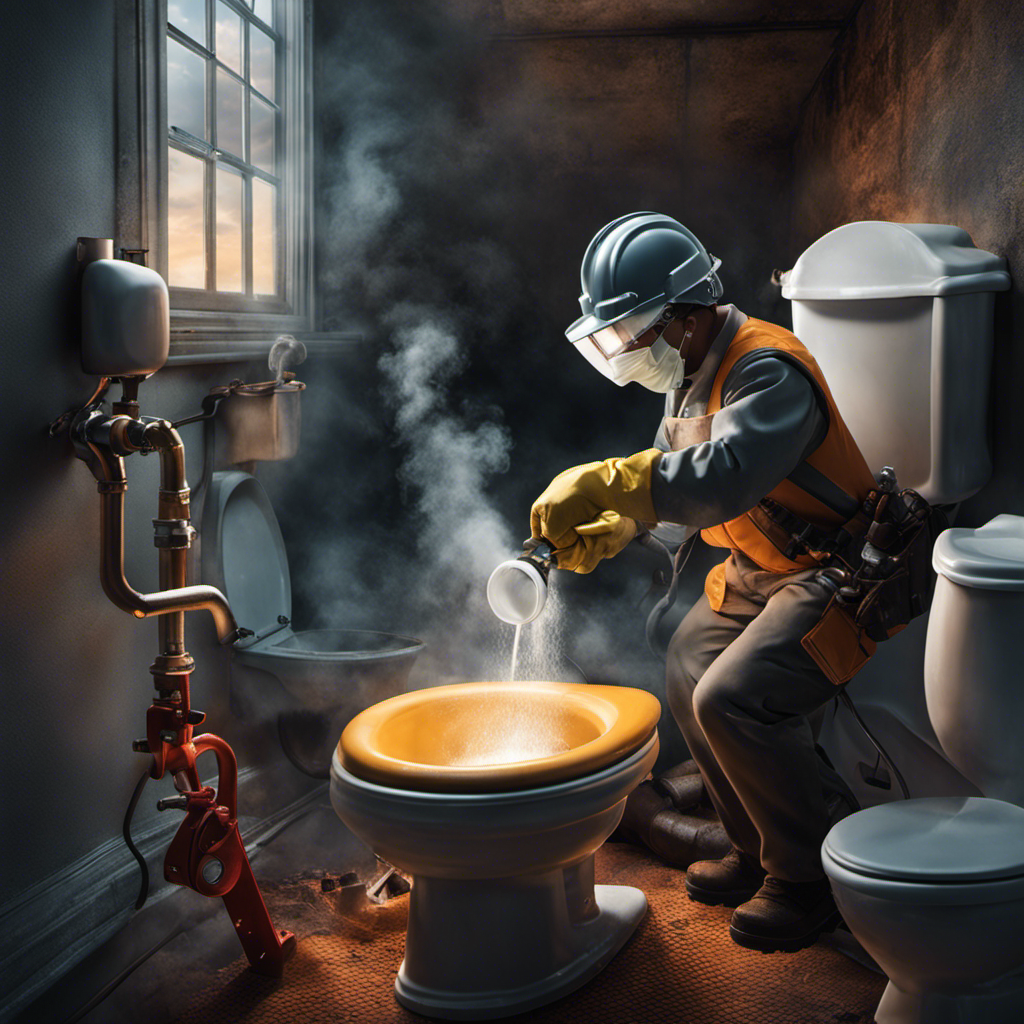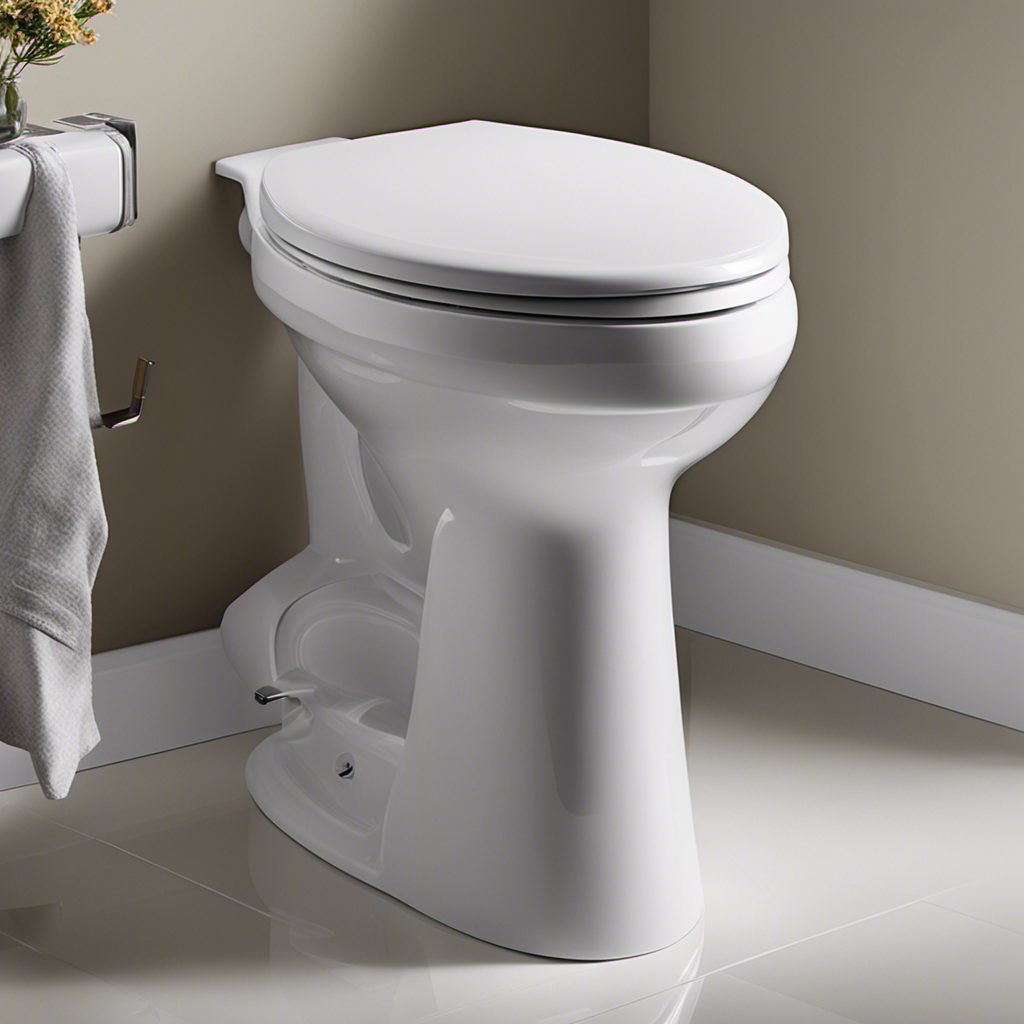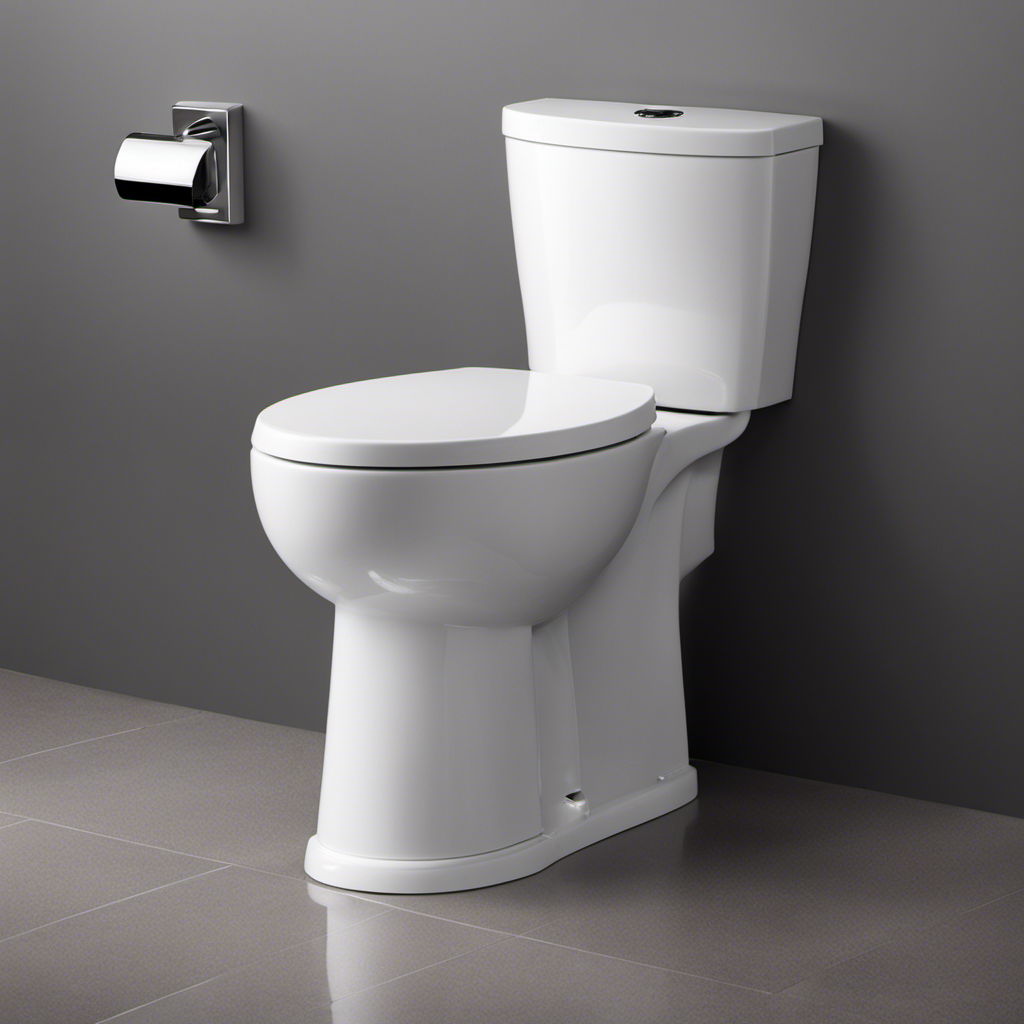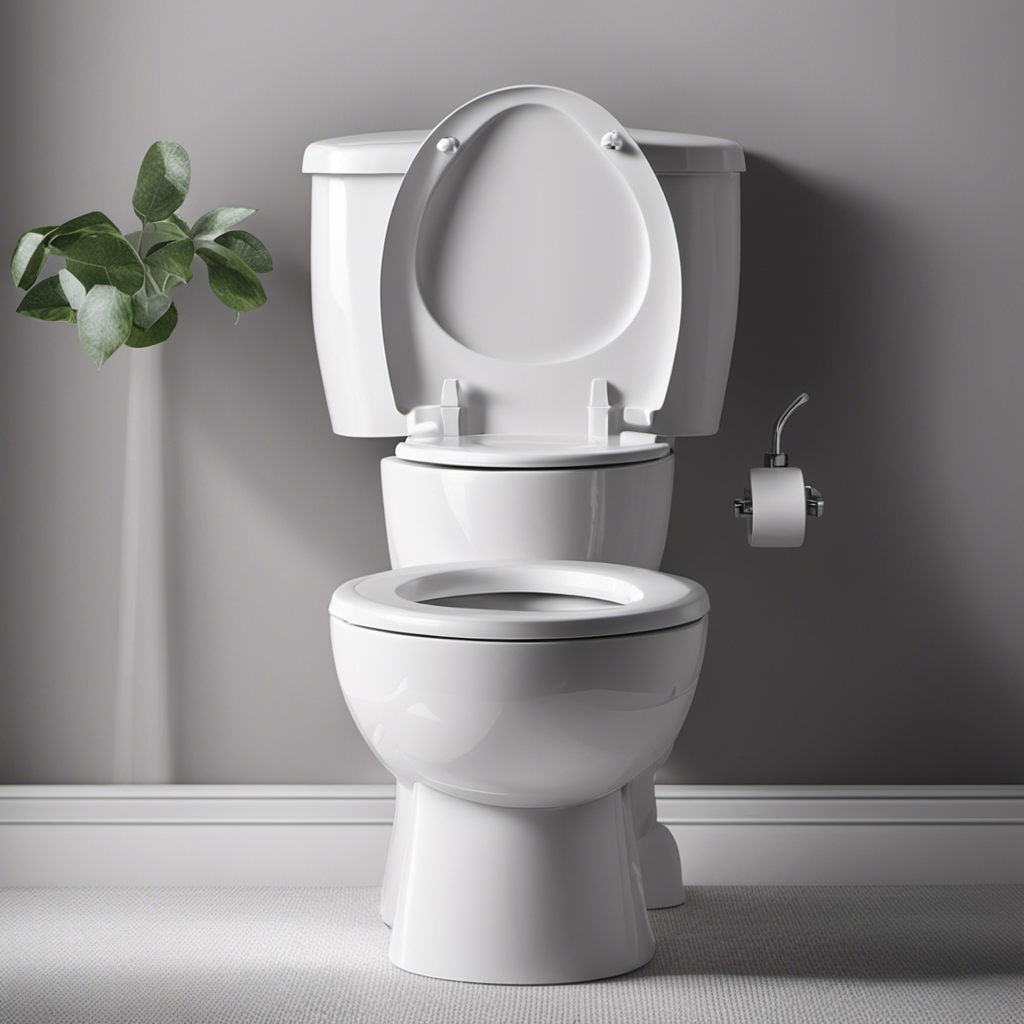As someone who has dealt with a leaky toilet before, I can attest to the importance of understanding how this essential fixture functions. Did you know that a significant percentage of toilets in America can leak at some point? Knowing the ins and outs of your toilet can save you from costly and messy situations.
That’s why I’m here to guide you through the ultimate manual on toilet parts and function. From the inner workings of the fill valve to the role of the toilet base and closet flange, we’ll cover it all.
So, let’s dive in and unravel the mysteries of your toilet.
Key Takeaways
- Knowing how your toilet works can save you money and time.
- Having some areas of plumbing knowledge can assist professionals when you call for assistance.
- Water damage caused by toilet issues can be more expensive than just being without a toilet.
- Fixing a toilet problem without experience or plumbing knowledge can be costly and messy.
The Anatomy of the Toilet Tank
The toilet tank contains various important components, such as the toilet handle, trip lever, chain, flapper valve, and flush valve gasket. Proper maintenance of these components is crucial for the smooth functioning of your toilet.
When troubleshooting toilet tank issues, it’s essential to check each component individually. Start by inspecting the toilet handle and trip lever for any signs of damage or misalignment. Ensure that the chain is properly connected to the trip lever and the flapper valve.
Check the flapper valve for any cracks or leaks, as this can lead to water wastage. Lastly, examine the flush valve gasket to ensure it provides a tight seal.
Understanding the Toilet Bowl Mechanisms
When I flush the toilet, the trip lever lifts the flapper valve, allowing water to flow from the rim holes. Understanding the mechanisms of the toilet bowl is crucial for proper maintenance and troubleshooting.
One common problem is a clogged toilet bowl, which can be caused by excessive toilet paper or foreign objects. To solve this, you can use a plunger or a toilet auger to remove the blockage.
Another issue is a running toilet, where water continuously flows into the bowl. This can be caused by a faulty flapper valve or a damaged fill valve. Replacing these components can resolve the problem.
Regular toilet bowl cleaning is essential to prevent stains and odors. Using a toilet brush and cleaner, scrub the bowl thoroughly and flush to rinse away the residue.
Exploring the Exterior Plumbing Components
As I explore the exterior plumbing components, I realize the importance of understanding the role of the closet flange in mounting and insulating the toilet. The closet flange, a rubber ring, plays a crucial role in ensuring a tight and secure connection between the toilet base and the floor. It not only provides stability to the toilet but also prevents water from seeping out and causing damage.
| Toilet Base Materials | Exploring Toilet Flange Installation |
|---|---|
| Porcelain | The most common material used for toilet bases, it is durable and easy to clean. |
| Ceramic | Similar to porcelain, ceramic is also a popular choice due to its durability and resistance to stains. |
| Plastic | Plastic toilet bases are lightweight and affordable, making them suitable for budget-friendly options. |
Installing a toilet flange involves placing the rubber ring over the drainpipe and screwing it into the floor. It is important to ensure a tight seal by applying sealant between the flange and the floor. This prevents any leaks and provides proper insulation. Understanding the installation process and choosing the right flange for your toilet base material is crucial for a successful and long-lasting toilet installation.
The Inner Workings of the Fill Valve
As I examine the inner workings of the fill valve, I realize how crucial it is for the water to flow from the water supply through the flexible hose and shut-off valve in order to fill the tank and ensure proper functioning of the toilet.
The fill valve is responsible for regulating the water level in the tank. It is a vital component that needs regular maintenance to prevent common fill valve problems.
One common issue is a faulty fill valve that causes the tank to continuously fill or not fill at all. This can lead to water wastage or a toilet that won’t flush properly.
Another problem is a clogged fill valve, which can result in a slow or incomplete tank refill. Regular maintenance, such as cleaning or replacing the fill valve, can help prevent these problems and ensure the efficient operation of your toilet.
How the Trip Lever and Flapper Valve Function
Upon inspecting the trip lever and flapper valve, I realize their crucial role in activating the release of water from the tank when I operate the toilet handle. Here are four key points about the trip lever and flapper valve:
-
Troubleshooting Flapper Valve Issues: If you notice water continuously running into the bowl, it could be due to a faulty flapper valve. To fix this, check if the flapper valve is properly sealing the tank. If not, adjust or replace it.
-
How to Fix a Stuck Trip Lever: If the trip lever gets stuck and the toilet won’t flush, there may be an issue with the chain or the trip lever itself. Ensure the chain is properly connected and not tangled. Lubricate the trip lever if it’s sticking.
-
Importance of Proper Alignment: The trip lever and flapper valve must be properly aligned for the toilet to function correctly. Misalignment can cause leaks and inefficient flushing. Adjust the trip lever and flapper valve so they align properly.
-
Regular Maintenance: To prevent issues with the trip lever and flapper valve, perform regular maintenance. Clean the trip lever and check the flapper valve for any signs of wear or damage. Replace any worn-out parts to ensure proper functioning.
Understanding how to fix a stuck trip lever and troubleshoot flapper valve issues is essential for maintaining a properly functioning toilet. By following these steps, you can address common problems and keep your toilet in good working condition.
The Role of the Toilet Seat and Seat Cover
When I sit on the toilet, the seat and seat cover provide comfort and prevent water from splashing. Maintaining the toilet seat is crucial for hygiene and ensuring a pleasant experience.
Regular cleaning with mild soap and water helps to remove any dirt or bacteria buildup. Additionally, using a toilet seat cover offers several benefits.
Firstly, it acts as a protective barrier between the user and the seat, reducing the risk of coming into contact with germs or bodily fluids. Secondly, it helps to absorb any liquid, preventing it from seeping through and staining the seat. Lastly, a seat cover can add an extra layer of cushioning, making it more comfortable to sit on for extended periods.
Overall, proper toilet seat maintenance and the use of a seat cover contribute to a cleaner and more hygienic bathroom experience.
The Importance of the Toilet Base and Closet Flange
I’ve learned that the toilet base and closet flange are crucial for connecting the toilet bowl to the floor and preventing water flooding. Here are four important things to know about toilet base installation and troubleshooting closet flange issues:
-
Proper installation of the toilet base is essential for stability and preventing leaks. It should be securely bolted to the floor using the provided bolts and a sealant to ensure a watertight connection.
-
The closet flange, a rubber ring, is used to mount the toilet on the floor and insulate it. It helps create a seal between the toilet and the waste pipe, preventing odors and leaks.
-
If you’re experiencing a rocking toilet or water leaks around the base, it may be due to a loose or damaged closet flange. You can troubleshoot this issue by tightening the bolts or replacing the damaged flange.
-
It’s important to regularly inspect the toilet base and closet flange for any signs of damage or wear. This can help prevent future issues and ensure the proper functioning of your toilet.
Examining the Rim Holes and Flush Valve Gasket
Inspecting the rim holes and flush valve gasket reveals vital components that contribute to the proper functioning of the toilet. The rim holes, located under the toilet bowl, play a crucial role in allowing water circulation during flushing. Common problems with rim holes include clogging and mineral buildup, which can lead to weak or incomplete flushing. To fix this issue, you can use a wire hanger or a small brush to remove any debris or buildup.
Another important component is the flush valve gasket, which seals the tank and prevents water leakage. Over time, this gasket may wear out or become damaged, resulting in water leaks. To replace the flush valve gasket, first, turn off the water supply and flush the toilet to drain the tank. Then, remove the old gasket and clean the area thoroughly. Finally, install the new gasket according to the manufacturer’s instructions, ensuring a proper seal to prevent water leakage.
Regular inspection and maintenance of these components will help ensure a properly functioning and leak-free toilet.
A Step-by-Step Guide to How the Toilet Works
To understand how a toilet works, water flows from the water supply through various components, such as the fill valve and trip lever, ultimately allowing waste water to be flushed down the drain.
Here is a step-by-step guide to how the toilet works:
-
Water enters the fill valve, refill tube, and overflow tube, filling the tank until the float ball signals the fill valve to stop.
-
Operating the toilet handle activates the trip lever, pulling the chain connected to the flapper valve, allowing water to release from the rim holes.
-
Waste water flows down into the P-Trap pipe and through the waste pipe.
-
The toilet is now ready for the next flush.
Troubleshooting common toilet problems can be a breeze with a little knowledge. Regular maintenance is key to ensuring a properly functioning toilet.
Remember to check for leaks, clean the rim holes, and inspect the flapper valve for any signs of wear. By following these tips, you can keep your toilet in top shape and avoid costly repairs.
Frequently Asked Questions
How Can I Troubleshoot a Leaking Toilet Tank?
To troubleshoot a leaking toilet tank, I would first inspect the flapper valve and flush valve gasket for any signs of damage or wear. These are common causes of leaks and can be easily repaired with replacement parts.
What Are Some Common Signs of a Faulty Fill Valve?
Signs of a faulty fill valve include constant running water, slow tank refill, and water leakage. Common causes of fill valve malfunction are sediment buildup, worn-out parts, and improper adjustment. These issues can lead to costly water damage if not addressed promptly.
How Often Should I Replace the Toilet Flapper Valve?
I should replace the toilet flapper valve every 3-5 years. Signs of a worn-out flapper include water leakage, continuous running, and a weak flush. Regular maintenance and inspection can help prolong the lifespan of the flapper valve.
Can I Install a Different Type of Toilet Seat on My Toilet?
Yes, you can install a different type of toilet seat on your toilet. There are various options available, such as standard, elongated, and cushioned seats. Consider factors like size, shape, and material to choose the right seat for your bathroom.
Are There Any Specific Maintenance Tasks I Should Perform on the Exterior Plumbing Components of My Toilet?
Yes, it is important to perform regular maintenance on the exterior plumbing components of your toilet. This includes checking for leaks, tightening connections, and applying sealant if necessary. Regular maintenance can prevent costly water damage and ensure proper functioning of your toilet.
Conclusion
In conclusion, understanding the inner workings of a toilet is like unraveling the mysteries of a well-oiled machine. Each component plays a vital role, symbolizing the harmony and balance needed for a smooth flush.
From the fill valve’s precise water control to the trip lever’s decisive action, every part works together seamlessly.
By delving into the intricacies of toilet parts and function, we gain the power to troubleshoot and fix any issues that may arise.
So, let’s embrace this knowledge and become masters of our porcelain thrones.
